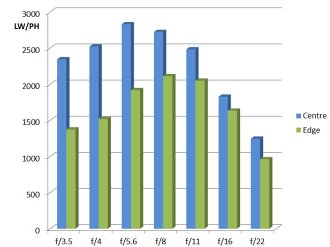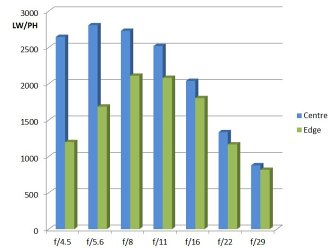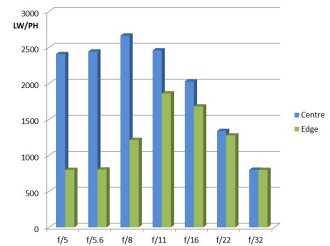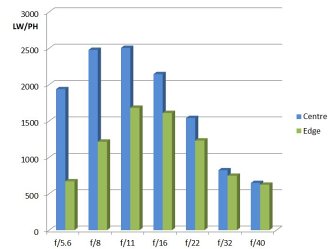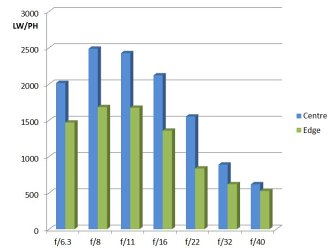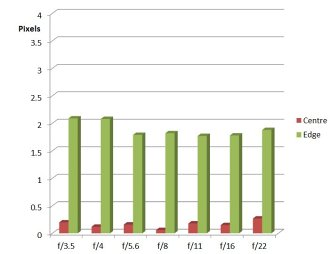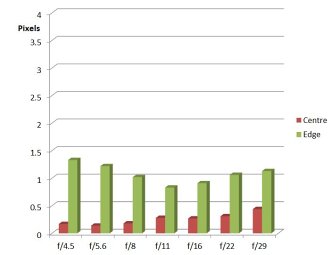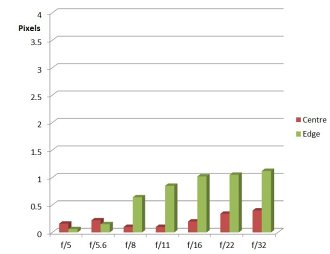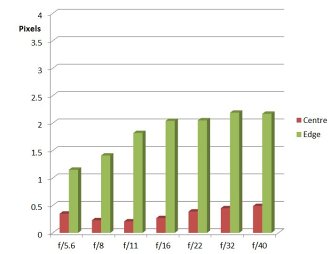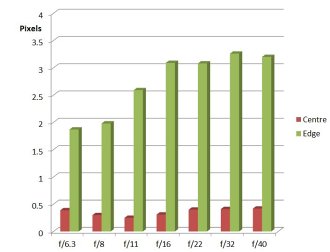Tamron 18-200mm f/3.5-6.3 Di II VC Review
Tamron 18-200mm f/3.5-6.3 Di II VC Performance
Sharpness varies over the lens range, but from the start it is clear that higher levels of performance will be found at the centre of the image and at shorter focal lengths. At 18mm, central sharpness is excellent, approaching outstanding, from open aperture through to f/11. It is still very good at f/16 and only drops to fair at f/22. The edges lag some way behind, reaching very good levels from f/5.6 to f/11 but being just fair to good from open aperture to f/4, good at f/16 but poor at f/22. CA (Chromatic Aberration) is very well controlled at the centre, but will be obvious at the edges, especially in subjects such as tree branches against bright sky.
At 35mm, central sharpness is again excellent from open aperture to f/11, very good at f/16, falling to fair at f/22 and poor at f/29. At the edges, open aperture is fair, sharpening to a good level at f/5.6, very good at f/8 to f/16, falling again to fair at f/22 and poor at f/29. CA is still at a very low central level and the edges rather better than at 18mm.
At 70mm, central sharpness is excellent from f/5 to f/11, very good at f/16, fair at/22 and poor at f/32. Edge sharpness deteriorates somewhat, only reaching fair levels at f/8, very good sharpness at f/11 and dropping off again to good at f/16, fair at f/22 and poor at f/32. CA is even more tightly controlled and rather impressive.
At 135mm, open aperture sharpness is very good, becoming excellent at f/8 and f/11, falling to very good at f/16, still good at f/22 before tailing off to poor levels at f/32 and f/40. The edges start off poor at f/5.6, fair at f/8, good and f/11 and f/16, fair again at f/22 and poor at f/32 and f/40. Central CA is still at a very low, insignificant level, but the edges are straying a bit and will show obvious signs of fringing.
At 200mm, a similar pattern is seen, with open aperture being very good, sharpening to excellent at f/8 and f/11, then reducing to very good at f/16, good at f/22 and again poor at f/32 and f/40. The edges do not catch up, only reaching good levels at f/8 and f/11. CA at the centre is still low and not a problem, but the edges have quite high levels. Software will assist with this if needed.
How to read our charts
The blue column represents readings from the centre of the picture frame at the various apertures and the green is from the edges.The scale on the left side is an indication of actual image resolution as LW/PH and is described in detail above. The taller the column, the better the lens performance.
For this review, the lens was tested on a Canon EOS 600D using Imatest.
Testing the lens at various focal lengths gives a fairly complex picture, but it is clear that the bokeh can be slightly fussy, but less so at longer focal lengths. It becomes quite pleasant from 70mm or so, making that useful for portraiture.
How to read our charts
Chromatic aberration is the lens' inability to focus on the sensor or film all colours of visible light at the same point. Severe chromatic aberration gives a noticeable fringing or a halo effect around sharp edges within the picture. It can be cured in software.Apochromatic lenses have special lens elements (aspheric, extra-low dispersion etc) to minimize the problem, hence they usually cost more.
For this review, the lens was tested on a Canon EOS 600D using Imatest.
The VC system does work well, albeit requiring 1 second or so to lock on. The effect of this can be seen quite clearly in the viewfinder. For critical sharpness, good results were obtained over two stops. For a slightly lower demand, up to four stops advantage can be seen. Large prints would mean less leeway, but for web use four stops is achievable.
Distortion starts off high, with -4.01% barrelling at 18mm. This rapidly becomes pincushion distortion, measuring +0.899% at 35mm, +1.59% at 70mm, +1.24% at 135mm and +1.08% at 200mm. This can be corrected in software if required and is reasonable for this lens design.
Flare resistance is excellent and the lens can be used into the light with very satisfactory results. The coatings and construction work well to avoid any artifacts from flare.
Overall, we have here a lens with quite impressive central performance, at the expense of the edges. However, the better edge sharpness is found at wider angles where overall sharpness in an image might be more essential, such as landscapes. The longer focal lengths may well be more suited to sports, wildlife and portraits and here the emphasis is to maintain the central quality as much as possible. As something has to give with the design at this price level, the choices made do seem logical. In any event, the very smallest apertures are best avoided, especially at longer focal lengths.
The Tamron 18-200mm f/3.5-6.3 Di II VC Lens delivers visually sharp, contrasty and punchy images.
Value For Money
Alternatives are to be found in the Canon EF-S 18-200mm f/3.5-5.6 IS lens (£356) and for Nikon users the Nikon 18-200mm f/3.5-5.6 G AF-S DX ED VR II (£469), or for both marques the Sigma 18-200mm f/3.5-6.3 DC Macro OS HSM at £249.
The Tamron costs a modest £169, which gives us a lot of lens for very little money. For more options have a look at to Top 5 Best Tamron Lenses of 2015.
Add your message
Please login here or if you've not registered, you can register here. Registering is safe, quick and free.
photodo Stats
428 MTF tests
74 in-depth photodo reviews
100+ users join each day
Help the lens community by reviewing or rating a lens today via our lens search
Latest Lens Reviews
- Chinon 28mm f/2.8 Vintage Lens Review
- Canon EF 70-200mm f/4L IS II USM Lens Review
- Samyang AF 85mm f/1.4 EF Review
- Sigma 70mm f/2.8 DG Macro Art Review
- Samyang AF 24mm f/2.8 FE Review
- Meike 50mm f/1.7 Review
- Tamron 70-210mm f/4 Di VC USD Review
- Lensbaby Burnside 35mm f/2.8 Review
- Asahi Super Takumar 50mm f/1.4 Review
- Asahi Super-Multi-Coated Takumar 135mm f/3.5 Review
